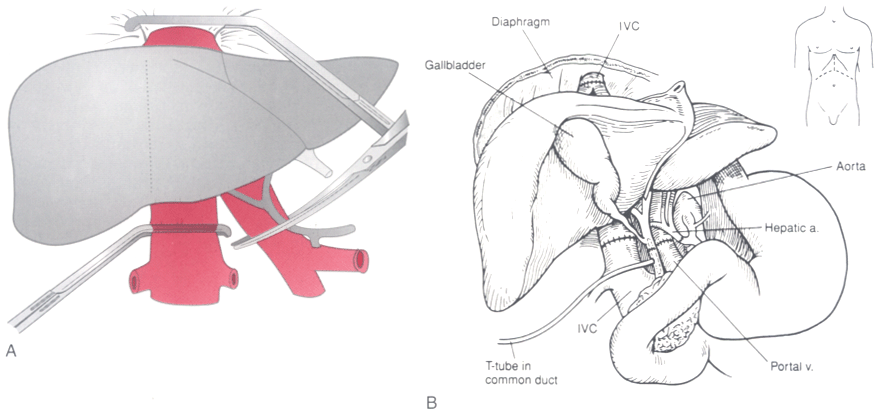Figure 56-4
A, With the use of a caval
interpositional technique immediately before the anhepatic phase, the suprahepatic
and infrahepatic vena cava and the portal vein are clamped. The hepatic artery is
frequently clamped late in the dissection phase. B,
Anastomoses during liver transplantation. The donor's suprahepatic and infrahepatic
venae cavae are anastomosed to the recipient, followed by the portal vein. Frequently,
the hepatic artery and bile duct are anastomosed in the reperfusion phase. A Roux-en-Y
loop of the small intestine is an alternative biliary drainage conduit. Reconstruction
of the hepatic artery, portal vein, or bile duct is occasionally necessary. Placement
of a T-tube for drainage of the bile duct is not mandatory and is increasingly not
being performed. (From Hardy JD: Hardy's Textbook of Surgery, 2nd ed.
Philadelphia, JB Lippincott, 1988.)

